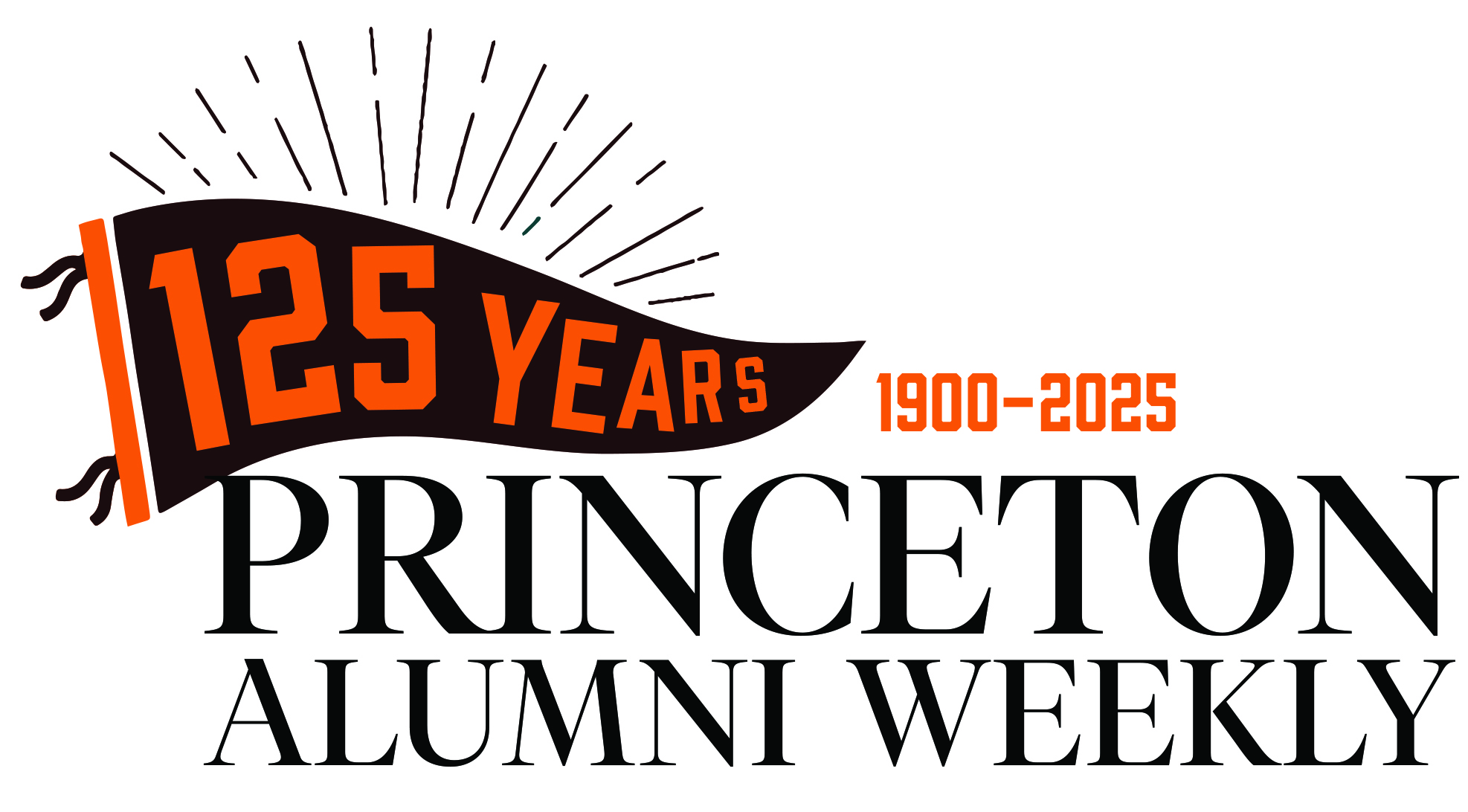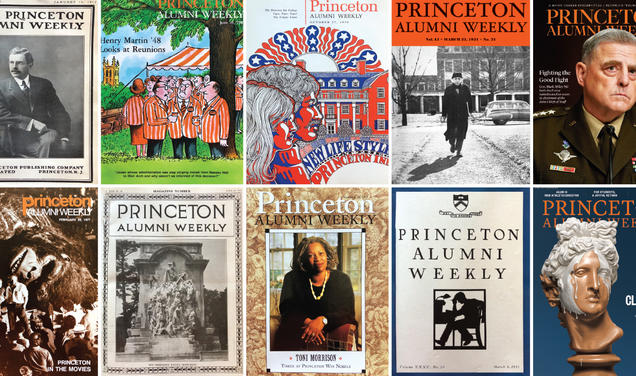Choosing Trustees Requires Greater Transparency
“Princeton wants alumni to think they have a voice, but the Board of Trustees is an opaque, largely undemocratic ladder”
Every year, the Committee to Nominate Alumni Trustees calls for nominations for elections to be held in April. As alumni who care about Princeton and its place in the world, we responded. However, in the unofficial year of democracy, our experience has left us with many questions about who really runs the University.
We congratulate the winners of this year’s elections — Edward Felsenthal ’88, Sarah Marie Bruno *21, and Aisha Chebbi ’24 — with term and charter trustees to be announced only after PAW went to press. Our concerns relate instead to the process and profound lack of transparency of the Board of Trustees and the Committee to Nominate Alumni Trustees.
Alumni may not realize that, for many years, all the trustees have been alumni (other than the ex-officio governor of New Jersey). There are usually between 36 and 40 trustees, in four categories:
• Charter (currently 14), appointed by the other trustees for six years, with eligibility for an additional two years;
• Term (currently eight), appointed by the other trustees for four years;
• Young alumni (four), elected by the juniors, seniors, and the two classes that have just graduated;
• And alumni trustees (nine), elected by alumni for four years.
This means that the elected trustees are always a minority. The board is controlled by the appointed charter and term trustees who are selected by the other charter and term trustees, in what amounts to an exclusive closed shop.
As most alumni would assume, in accordance with the bylaws, trustees leave the board at the end of their term. However, a large number are reappointed by their fellow trustees the following year and in fact, their terms can be and are extended indefinitely in this way. The current chair of the Board of Trustees, Louise (Weezie) S. Sams ’79, has been on the board for 19 of the past 20 years. In contrast, an alum who has been a ballot candidate but not elected may be nominated a second time, but an interval of no less than five years must elapse before consideration.
The Committee to Nominate Princeton Alumni Trustees is composed of the most recent past president of the Alumni Association and nine alumni, elected by the Alumni Council. Other than being from different regions, how they are chosen or elected is not made public. The opaque nature of the composition of the committee extends to its workings.
To begin the nomination process, there is a brief form to be filled out on the website and more information about the nominee can be uploaded. However, there are no guidelines about what is expected. We submitted biographies similar to the ones circulated by Princeton for previous alumni trustee candidates. Was that too little?
Once the form and any attachments are submitted, the nominator receives an automatic reply confirming submission. And in our case, that was it. The three alumni who were nominated — Robert Herbst ’69, Claire Kaufman *23, and Ryan Warsing *21 — never received even an acknowledgment of their offer to serve Princeton. Princeton knows how to communicate when it wants to so the silence was deeply disappointing. All three nominees met this year’s election criteria and have qualities that would make them excellent trustees.
There are no statistics made available about the number of nominees each year and no information about who is interviewed. We know from the website that had any of us been nominated, like the young alumni trustee candidates, we would not have been able to write our own bios and we would not be able to campaign. Would that be unseemly? Shouldn’t ideas be shared for a more lively and participatory voting process?
Engaged, active alumni are exactly the people you would want as trustees. For example, alumni who may have expressed an opinion about Princeton or urged the University to take action to make it a better place. The University, however, has different ideas about this: “Princeton’s most effective trustees are open-minded, have the ability to consider all evidence that comes before them and an overarching commitment to arrive at the best decision for the University as a whole, not as an advocate for a position or a particular constituency that could undermine the workings of the board or their own effectiveness on the board.” This “neutrality” condition for trustees simultaneously underestimates the value of a Princeton education and penalizes civic participation.
We believe that expressing views or working on a particular issue related to the integrity of an institution should not disqualify nominees. In fact, they may be assets to the board. Moreover, if there are no clear and public criteria for election, there is no way to know what is and isn’t acceptable and the status quo and insular nature of the board is reinforced. Given the board’s secrecy and lack of clarity, we have no way of knowing if the term and charter trustees are also prohibited from having any “positions or particular constituencies.” Surely the goal is a board that encompasses a range of views and experiences with trustees who are willing to grapple with difficult issues.
The pro-democracy think tank Freedom House has posed the question: Is it possible to have a free but unfair election? Princeton wants alumni to think they have a voice, but the Board of Trustees is an opaque, largely undemocratic ladder that leads to extraordinary power well beyond the campus walls. Unless there are good reasons — so far unarticulated — for the board and administration to fear a more transparent, democratic process, they can surely do better than this.












2 Responses
Ken Jasko ’78
8 Months AgoDo Trustees Want To Keep Alumni in the Dark?
A few years ago I wrote a letter to the University asking for more information on how the Board of Trustees was structured and how trustees were chosen. I never got a response.
It is obvious that this is a topic that the University leadership does not want to discuss. But they want us to trust that they are governing the University properly. The word “trustee” is based on the word “trust.” If they want us to trust them, they will need to bring the process to the light of day and show some transparency. Right now they act as if they have something to hide.
Richard Golden ’91
9 Months AgoMy Own Experience with the Alumni Trustee Election Process
I was dismayed but not in any way surprised to read the guest essay on the lack of transparency in the Alumni Trustee election process. My own experience with that process closely echoes what is described in the essay.
In late 2023 a colleague submitted a nomination on my behalf for the Region I election set to occur in April 2024. The colleague immediately received the standard automated acknowledgment but after several weeks I heard nothing else about the status of my nomination. After reaching out to the trustee staff via email, I was told that I had missed the deadline for nominations. I would have graciously accepted that explanation had the deadline been published anywhere on the Committee to Nominate Alumni Trustees website.
The website was completely devoid of any information on the following:
1. The time frame for submitting nominations.
2. The selection criteria employed by the committee to determine nominees (the most important of all).
3. The process for notifying both successful and unsuccessful nominees.
4. How the members of the committee are themselves selected.
The essay authors also mentioned the prohibition on nominees issuing campaign platforms or statements, a curiously undemocratic rule unfortunately shared by peer schools such as Harvard and Yale. I try to imagine candidates for a local town council or school board being prohibited from telling voters what issues they intend to address if elected. I suppose we are to just trust these candidates? I suppose the administration is afraid that trustees will speak their minds in a manner contradictory to the positions held by the administration?
I have spoken about this issue with a handful of other dissatisfied alumni, but I was not aware that there were others who shared our sentiments. I am hopeful that enough alumni join the essay authors in advocating common-sense reforms to the process.